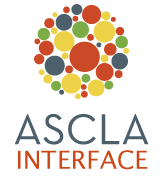By Erica MacCreaigh, Correctional Libraries Senior Consultant, Colorado State Library
Of the more than 1 in 100 American adults currently behind bars1, 95% will eventually be released. Of these, nearly 50% will return to prison within 3 years.2 This rate of recidivism produces devastating social consequences for victims, offenders’ families, and offenders themselves.
As conditions of their parole, most ex-offenders are expected to obtain a state identification card or driver’s license, find a place to live, get a job (which usually entails securing a means of transportation), and attend parole-related meetings, all within a few weeks of release. For long-term success in the real world, many ex-offenders also need mental health and addiction recovery care, as well as financial assistance to pay for prescriptions, food, and clothing appropriate for employment. Meeting all of these needs means navigating a bewildering sea of social services, often with little guidance from social workers, re-entry specialists, and parole officers with overwhelming case loads.
Libraries help simplify the reentry process for ex-offenders by collecting and packaging information about their communities’ social services in one convenient location. New York Public Library, Newark (NJ) Public Library, Monroe County (NY) Library System, and Hennepin County (MN) Library maintain web pages and/or print resources for prisoners reintegrating into the community. Non-library agencies producing similar material include the Colorado Criminal Justice Reform Coalition, the United Way of Greater Cleveland (OH), and the New Jersey Institute for Social Justice.
Now, an ongoing Colorado State Library project seeks to provide a similar information resource to ex-offenders in the city and county of Pueblo, Colorado.
Tentatively entitled The Pueblo Community and Prisoner Reentry Resource Guide and slated for publication in spring 2010, this pocket-sized booklet highlights several prominent Pueblo agencies offering services to ex-offenders. Thoroughly researched and compiled by recent University of Denver SLIS graduate, Melanie Colletti, and edited by Colorado State Library Correctional Libraries Senior Consultant, Erica MacCreaigh, the guide provides contact information for local agencies equipped to help ex-offenders obtain identification, housing, job skills, food, clothing, health care, and substance abuse support groups. For agencies easily accessible by the Pueblo mass transit system, bus route information is also included.
Colletti and MacCreaigh have partnered with Colorado Department of Corrections staff for assistance with graphic design and formatting. Les Reynolds, graphic arts instructor at the Fort Lyon Correctional Facility in Las Animas, Colorado, has enthusiastically undertaken the design of the guide as a real-world project for his offender students.
Distribution is expected to begin in spring of 2010. Plans are underway to provide the guide for free through a variety of outlets, including the branches and satellites of the Pueblo City-County Public Library. Department of Corrections reentry specialists may also assist with distributing the guide.
More resources:
New York Public Library’s Connections 2010: A guide for formerly incarcerated people to information sources in New York City and The Job Search (pdf)
Newark Public Library’s Prisoner Re-entry http://nplwebguides.pbworks.com/Prisoner+Re-Entry
Monroe County Library System’s Making moves: A handbook for ex-offenders returning to the Rochester, NY and Monroe County area December 29, 2009 at http://www3.libraryweb.org/uploadedFiles/MCLS/Central/Departments/Extension_and_Outreach/Making%20Moves.pdf
Hennepin County Library’s Freedom Ticket http://www.hclib.org/pub/info/Outreach/freedomticket
Peeples, Carol and Christie Donner. Getting on After Getting Out. (Denver, CO: Colorado Criminal Justice Reform Coalition, 2007).
United Way of Greater Cleveland’s Going home to Stay: A guide for successful reentry for men and women http://www.211cleveland.org/pdfs/communityreentry.pdf
New Jersey Institute for Social Justice’s The Essex County smart book: A resource guide for going home http://www.state.nj.us/corrections/OTS/PDFs/090311/090311_Essex_Co_Smartbook.pdf
References
[1] Pew Center on the States, One in 100: Behind Bars in America 2008 (Washington, DC: The Pew Charitable Trusts, February 2008).
[2] Rosten, Kristi L. Fiscal Year 2007 Annual Statistical Report. (Colorado Springs, CO: Colorado Department of Corrections, 2008), p. 72.

1 comment
Chris McGrath says:
Aug 16, 2010
I know someone who would benefit from this publication. Where can I obtain a copy of The Pueblo Community and Prisoner Reentry Resource Guide?